What Hydrangea Where?
You’ve most certainly seen a hydrangea or two in about every garden you encounter. But do you know which one to use in your garden? There are a lot of hydrangeas out there. A lot!
Hydrangeas most commonly grown in North American gardens, fall into six species. Which are then broken down into many varieties of each. But we’ll touch on the most common and add a few of our favorites!
1. Big-leaf hydrangea (H. macrophylla)
These beautiful ball shaped blooms come in about every shade of purple, pink and blue. The hard working Endless Summer is quite popular around here, as are most of the new introductions that have since followed. There are also lace-cap varieties in this group. The older varieties of H. macrophylla would only bloom on “old wood”, meaning if you had a harsh winter the flower buds would be killed. Luckily with breeding comes better varieties that bloom on old and new wood.
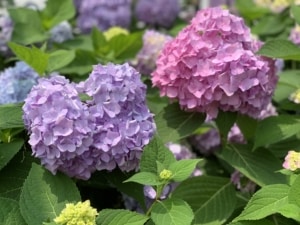
2. Panicle hydrangeas (H. paniculata)
Tardiva is an old favorite. The panicled hydrangea bloom late summer into fall. A great plant to extend the bloom season. There are many varieties that range in colors of flowers to overall size of plants (dwarfs). We like to use Hydrangea Bobo a sweet little dwarf with a nice clean white flower. Limelight is another showstopper with a chartreuse green flower head. Paniculatas require more sun than H. macrophylla, are usually larger, the flower heads more triangular/cone shaped, and they bloom on new wood.
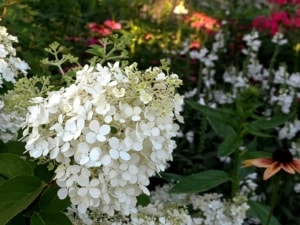
3. Oak-leaf hydrangeas (H. quercifolia)
These native beauties have large, oak like leaves that turn beautiful shades of deep red in autumn and has a peeling bark that looks like cinnamon. Flowers are usually large cone shaped white blooms, that age to pink. Hydrangea quercifolia Jetstream is our oak-leaf of choice!
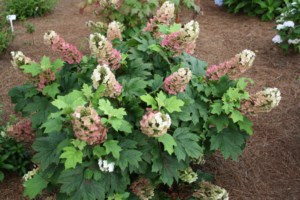
4. Smooth hydrangeas (H. arborescens)
These are the ever popular Annabelle hydrangea – the large, floppy mop-head hydrangea. In recent years newer varieties have been developed which include larger flower heads and even some with pink flowers – like the white Incrediball and the pink Invincibelle Spirit II. The Smooth Hydrangea also blooms on new wood, always. So these are great plants for colder climates!
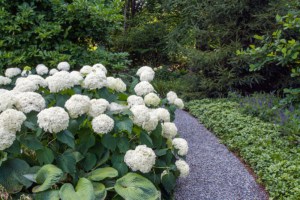
5. Climbing hydrangeas (H. petiolaris/anomala)
As the name says, this is a climbing hydrangea, a great plant to cover a wall. It grows in full sun and part shade. The flowers are a white lacy like bloom. It does require some maintenance as it will grow over just about anything! Blooms on old wood.
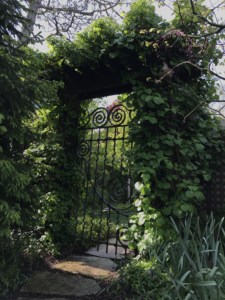
6. Mountain hydrangeas (H. serrata)
These hydrangea come from Japan and look similar to the macrophyllas, but are hardier. We like Hydrangea Tuff Stuff. The Mountain Hydrangea bloom on old and new wood.
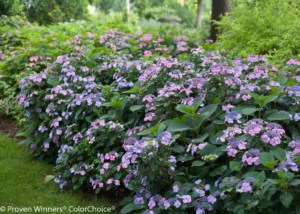
Hydrangea care:
- The majority of the Hydrangea species like full sun. Some of the larger leaf varieties will benefit from some afternoon shade.
- Hydrangea’s like lots of water.
- For H. serrata and H. macrophylla, bloom color is very much dependent on pH. The more acidic your soil, the bluer your bloom, and vice versa. You can change your pH using garden amendments such as aluminum sulfate (acid) and hydrated lime (alkaline) – but follow package directions carefully so you don’t make growing conditions for neighboring shrubs unbearable.
- An added bonus to these gorgeous flowers is they make great cut flowers! So don’t hesitate to cut a few blossoms and bring them inside.